Glamping?! Eco-Friendly Holiday Design Ideas
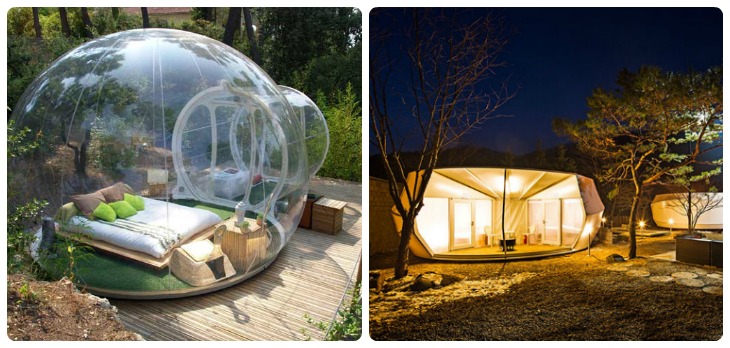
What is Glamping? Recently, a global trend has caught fire that offers outdoor enthusiasts an upgrade on rest and recreation. It’s called glamping, a new word for a new kind of travel, defined as glamorous camping.
When you’re glamping, there’s no tent to pitch, no sleeping bag to unroll, no fire to build. Whether in a tent, yurt, airstream, pod, igloo, hut, villa, cabin, cube, teepee or treehouse, glamping is a way to experience the great outdoors without sacrificing luxury.
For those whose souls needs to be at one with nature and who are tired of hotels and hostels, ‘glamp-sites’, now a feature worldwide, are an excellent solution to having an outdoors-type holiday the easy way. As well as giving guests a chance to get back in touch with the outside world, this trend has produced some fine examples of creative architecture and design to specific and challenging briefs.
Here are three ‘glampsites’ from around the world that rival any hotel for comfort and luxury.
1. Whitepod Hotel, Switzerland
Images are courtesy of www.whitepod.com
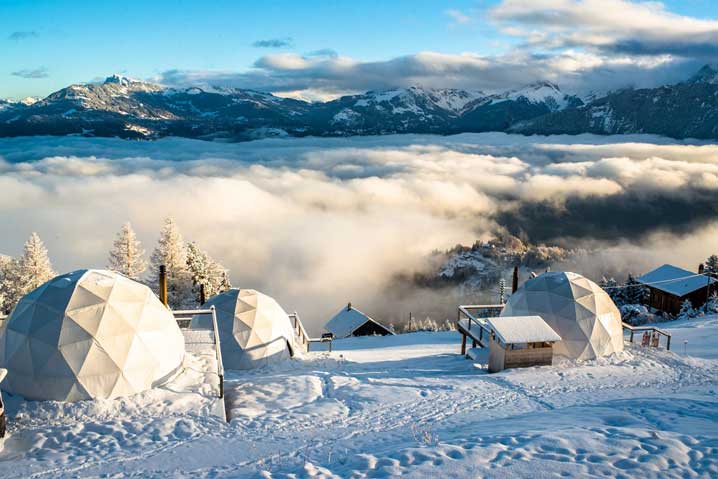
In the heart of the Swiss Alps at an altitude of 1,400m, 15 ultra-modern dome shaped tents can be found, split between 10 standard rooms and 5 family rooms. Situated deep in the mountainous landscape, this unique hotel offers a chance to enjoy winter in all its glory. The Whitepod’s rooms have been designed to incorporate both luxury and the surroundings – each room is a sphere-shaped structure composed entirely of triangles.
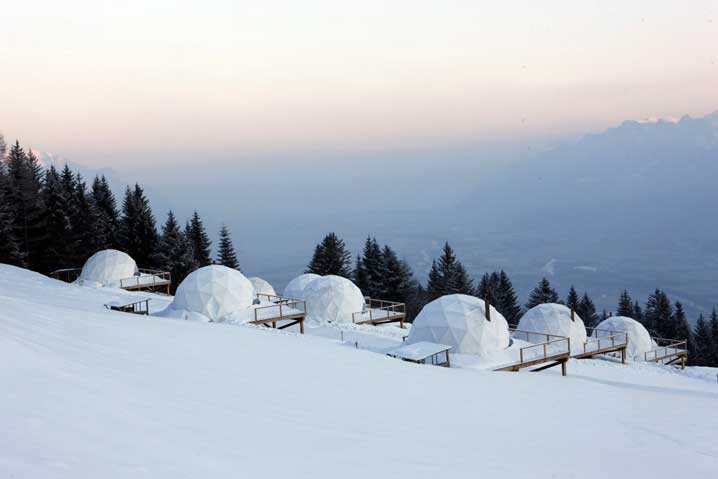
Each unit is attached to a wooden platform and include a mobile terrace. Standard rooms feature a large bed and a fully equipped bathroom and toilet; the family rooms, in addition to these standard features, have a mezzanine section, which is designed to accommodate two extra beds. Therefore, each sphere can easily accommodate up to four people.
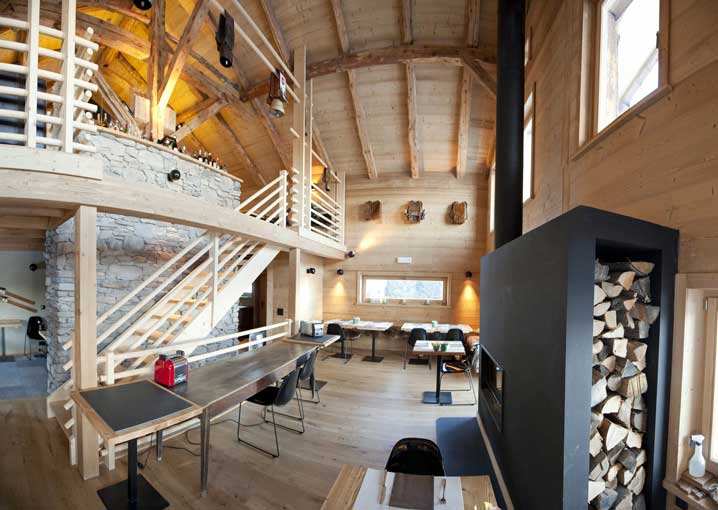
Besides the beautiful views, this hotel can boast an extraordinarily high level of environmental awareness, in that moving around the local area for hotel guests is permitted only on skis or snowshoes. There is no heating or lighting in the tents, which are heated using wood stoves, and the big windows allow sufficient sunlight into the rooms.

2. Attrap’Rêves Hotel, France
Images are courtesy of www.attrap-reves.com
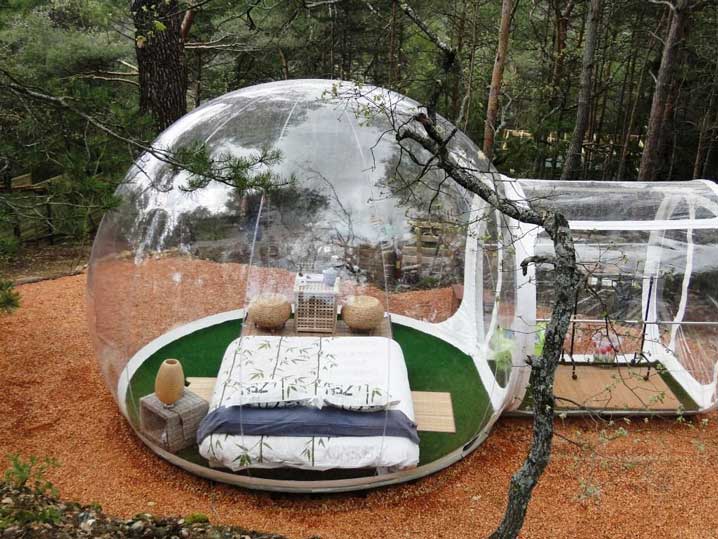
Plunging firmly into the ‘eco’ style allows designers to display unusual glamping-style projects. Pierre Stephane Dumas came up with an original approach to setting up and establishing the Attrap’Rêves Hotel. The hotel was one of the first glamping-style hotels and its name translates as ‘dreamcatcher’. Each structure is 3m high and 4m wide; the bubble-shaped houses blend perfectly with their surroundings, and as each structure is made entirely from recycled materials, they are perfectly environmentally-friendly. Each ‘bubble’ comes with its own separate shower and toilet. Each of the rooms features a themed design, but, in general, the interior design is modest: a double bed, a table, two chairs, and a night lamp (quite sufficient for quite a small area). The use of a telescope provides an interesting addition to the room – it is available to every hotel guest along with a stargazer’s guide, for looking at and admiring the night sky.
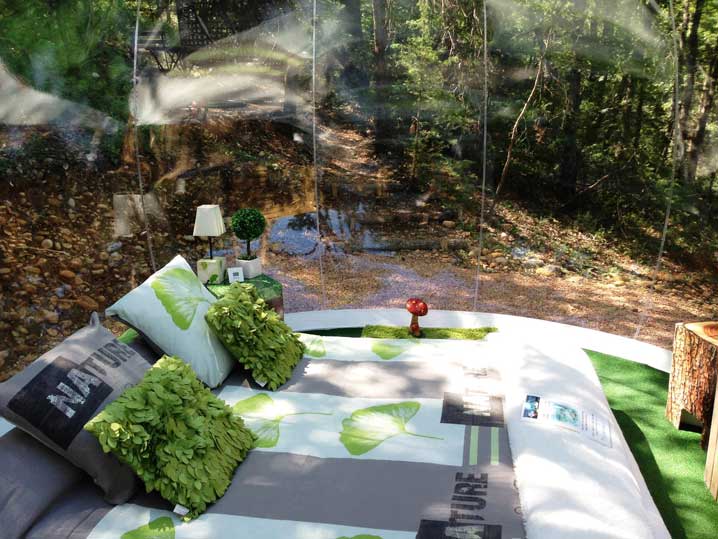

3. Worms and Doughnuts Campsite in Yang-Pyeong, South Korea
Images are courtesy of www.archiworkshop.kr
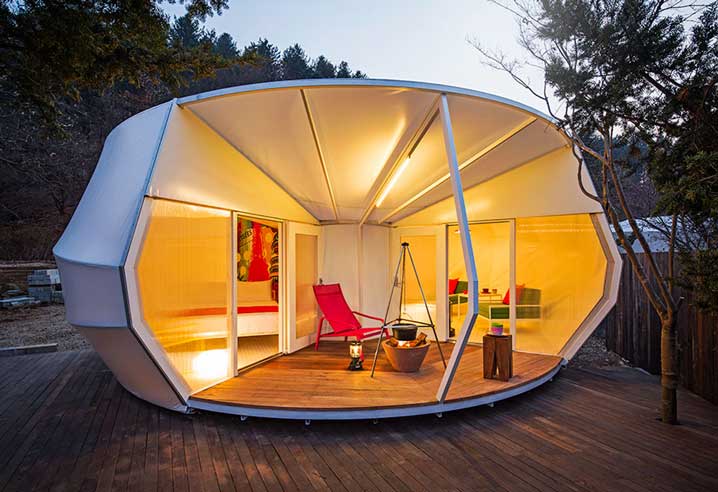
These tents are designed by the fresh young studio ArchiWorkshop, and in terms of shape, look like wriggling worms (they can also be folded) and doughnuts (a shape inspired by pebbles). The tents were designed with remote camping in mind, in Pyonyang, South Korea. The site is set in a valley, overlooking a forest and a creek and is surrounded by the gentle Korean landscape.
The tents’ waterproof and fire-resistent walls are made from fabric membranes, which also protect the inside of the tents from the sun’s UV rays; each room features a glazed entrance door, allowing natural light to penetrate through to the interior. Two-tier membranes were stretched over a steel frame to give the tents their curved appearance. Inside, there are white walls and bright, colourful designs; even the toilet areas feature artistic wall designs by a Korean artist.
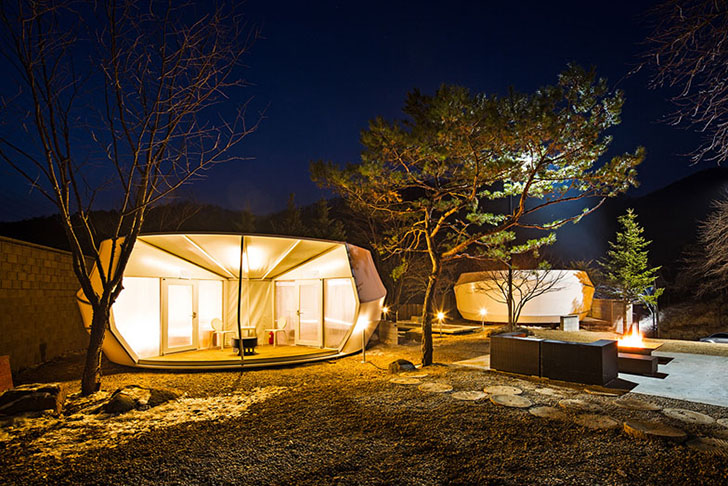
ArchiWorkshop also designed the furniture and the sofa bed was designed by the architects to order. This explains why certain features of the restricted internal space blend in so organically. This glamping experience combines both nature, environmental values, comfort and up-to-the-moment design altogether in a once-in-a-lifetime adventure.

Comments are closed.